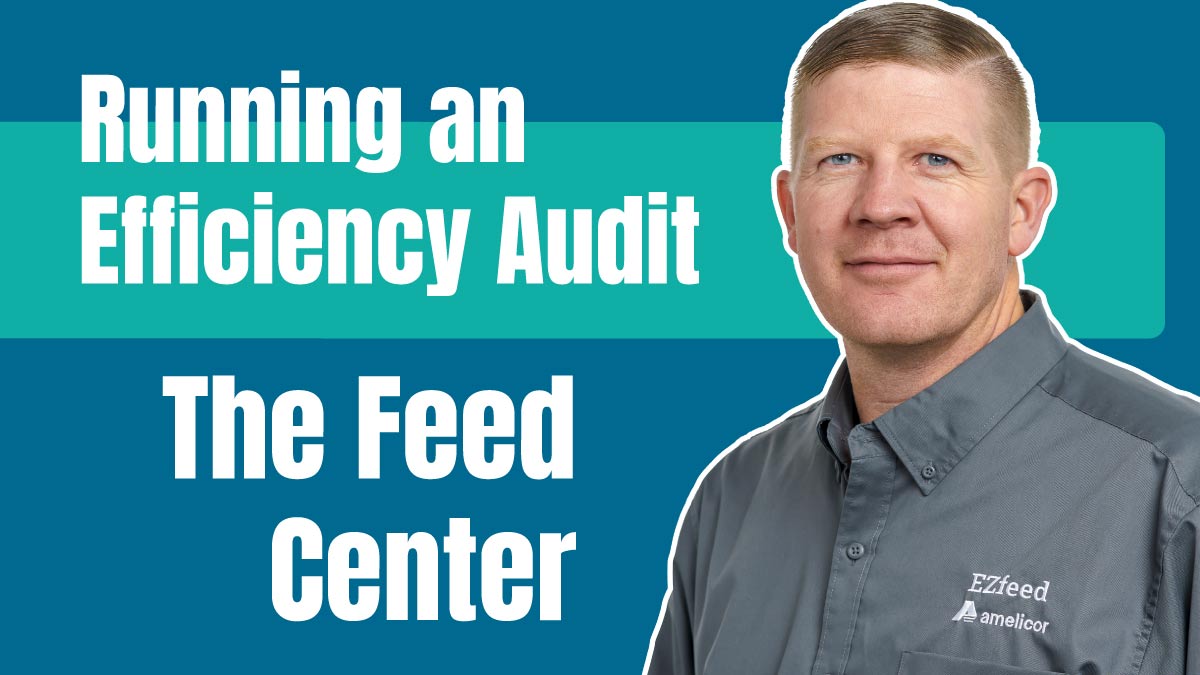If you are like most producers, at one point or another you toy with the idea of re-designing your feed center. Today there are lots of good examples of indoor feed centers and it yields the question, do I need a fancy feed center? If I take the plunge what will it do for me? Before jumping to a re-design, perhaps an efficiency audit is in order...
What is a feed center for?
The main purpose of a feed center is to protect the integrity of your commodities. Chances are, the single biggest expense on you dairy is feed, the cost of which is usually estimated to be 4 to 5 dollars a day for a lactating cow.
In recent years there has been much light shed on the true cost of feed. I think it is a common understanding that unless you are able to track inventory you can’t measure feed loss and therefore, you can’t understand the true cost of what you feed your cows.
Most would say it is impossible to eliminate feed loss, but by understanding areas within your control, creating a well-planned feed management program, and having well-trained feeders to execute the program, you can properly manage feed loss and truly understand the cost of feed.
With that understanding, the feed center is a big help in managing feed inventory. Some of the main needs to manage inventory are:
- A bay with access to both sides can be used to access the oldest feed in a bay first, and allow new feed to be added from the other side without disturbing loading.
- Bays that are large enough help keep inventory straight by not mixing up ingredients.
- Large enough area to accommodate delivery trucks and the way they will be dumping the load.
- Pre-determined bays for specific ingredients that are clearly labeled.
Beyond the integrity and inventory of your commodities
From my experience, the feed center is important for many reasons beyond protecting the integrity of your commodities and inventory. It is also used for:
- Having the ingredients close to the loading area.
- Being able to load feed efficiently by placing the higher volume ingredients closer to the mixer.
- Fuel Savings - reducing the amount of driving by having the feed center close to the pens.
- Farm traffic control
- Access for truck deliveries during office hours and for after hours.
- Accuracy - providing ways to handle smaller and more expensive ingredients.
Minimizing shrink is also a reason for good feed center design, but may also be more of a training issue. Having ingredients close to the mixer in a good order will reduce the need for the feeder to feel rushed. Slowing down and focusing on accuracy will definitely help minimize shrink.
Starting Out - Running an efficiency audit
Everybody who builds a feed center, no matter how big and how efficient, will almost immediately find ways they want to change it. No matter what situation you are in, you may have the means to change your feed center or maybe not, but the first thing to do is to understand where your financial deficiencies truly lie.
Efficiency is probably the easiest way to evaluate your feed center (and the people who run it). Take time to answer the questions that relate directly to financial loss either in feed or in labor:
- How long does it take to load each ingredient?
- How long does unloading take?
- Are your mixer scales calibrated?
- What does it cost to run your loader per hour?
- What does it cost to run your mixer per hour?
- How much fuel could be saved by reducing hours on equipment or loading and unloading time?
After understanding these things, you may find what looks like inefficiency. Now it’s time to ask how… how can equipment hours be reduced? How can I reduce the time it takes to load a particular ingredient?
Really the first step is having the data to evaluate what you are doing. Usually it doesn’t take very many weeks to build that data… it’s just a matter of doing the same things you have always been doing, but incorporating automatic ways to track that information. The following video will shows how you can evaluate this data using EZfeed.


